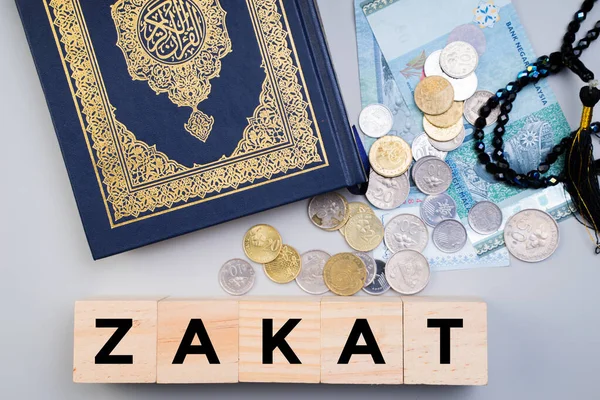Zakat stands as one of the fundamental pillars of Islam, necessitating annual contributions from Muslims. Understanding its significance is crucial for those with wealth. Zakat amounts hinge on various factors like property, assets, wealth, and jewelry. Once the financial threshold or ‘nisab’ is met, a designated sum is allocated to aid the less privileged, as stipulated by Islamic tenets. This article aims to demystify the process of calculating Zakat on assets like gold and property, ensuring adherence to Islamic principles. Understanding Zakat not only fulfills religious duties but also fosters compassion and social responsibility within the Muslim community.
Main Goal Of Zakat
Zakat serves as a mechanism for equitable wealth distribution in society, aligning with the principles set by Allah in Islam. By fulfilling Zakat obligations, Muslims not only seek divine favor but also extend a helping hand to those in need, thereby purifying their wealth. This act underscores the priority of spiritual rewards over material possessions in Islamic teachings.

Beyond individual salvation, Zakat fosters societal welfare and uplifts the less fortunate, epitomizing compassion and empathy. Additionally, the obligatory Fitrana payment before Eid-ul-Fitr further underscores Islam’s emphasis on charity and communal solidarity, ensuring the celebration’s inclusivity and shared blessings.
How To Calculate Zakat On Gold And Property?
The financial criteria, known as nisab, for Zakat obligation encompasses a Muslim’s tangible assets, including jewelry and property. This benchmark represents the minimum wealth threshold that must be maintained for at least a year. In 2024, the nisab stands at Rs. 135,179, indicating that individuals possessing this sum are mandated to pay Zakat for the year.

According to the gold standard, the nisab is equivalent to 3 ounces of gold (87.48 grams) or its cash value. Similarly, for silver, it amounts to 21 ounces (612.36 grams) or its monetary equivalent. Given the fluctuating prices of gold and silver, it is prudent to regularly verify the current rates when calculating Zakat obligations.
Zakat Application to Property
Zakat on property hinges solely on the nisab, the minimum threshold of wealth. However, the standards and criteria for property tax markedly differ from those of Zakat. Not all property types are subject to Zakat, necessitating an understanding of the specific types liable to Zakat. Typically, Zakat pertains to properties earmarked for future resale or rental, constituting capital assets generating income.
Land Intended for Sale
Land purchased for resale is deemed a commercial asset. The property’s Zakat liability hinges on its current value and the owner’s Zakat date.
Building Intended for Sale
Zakat applies to residential buildings under construction for sale. Funds received from sales are subject to Zakat at a 2.5 percent rate upon receipt, subsequently integrated into the owner’s wealth and subjected to Zakat accordingly.
Plots
Plots acquired for rental housing are exempt from Zakat. However, Zakat must be paid from rental income exceeding the nisab threshold. Agricultural land ownership exempts Zakat, with accrued savings treated akin to regular income for Zakat purposes.
Calculating Zakat on Property
To determine the amount of Zakat that you have to pay, you have to understand the value of your assets and the nisab requirement. Here are the steps you can follow to calculate the Zakat on your property:
- Review and calculate all your assets and money owned for one year or more to understand your nisab clearly.
- Calculate the sum of your assets and multiply it by 2.5 percent. The resultant value will be the Zakat.
Calculating Zakat on Gold
Calculating Zakat on gold or any other kind of jewelry is often considered to be complex and people are confused about how much is to be paid for their gold or silver. To pay it (in cash), you can give the market value of 2.5 percent of the weight of the jewelry.
If the jewelry that you own is made up of a mixture of metals, you are only required to pay Zakat on the gold and silver.
You can also give actual gold or silver in Zakat. If you own 100 g of gold jewelry, you can give 2.5 g of it in Zakat. However, gold and silver must be weighed separately before giving them as Zakat.
To Whom Should We Give Zakat?
The Quran tells us who should receive Zakat:
- Poor people: Those who can’t make money.
- Needy people: Those who can’t get what they need.
- Zakat collectors: They take Zakat and give it to people who need it.
- New Muslims: People who just started believing in Islam and need help.
- Travelers in trouble: People who don’t have money while traveling.
- People doing religious work: Those who serve religion and need money.
- Slaves: People who want to be free.
- People in debt: Those who owe money and need help.
This article explains how to calculate Zakat and its rules. If you have questions, ask us below. We’ll try to help.






